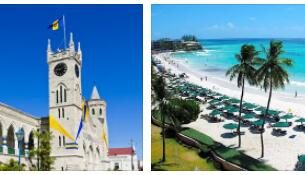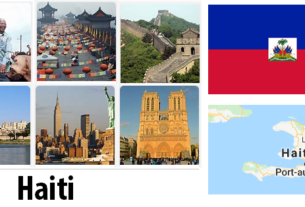Country overview
According to areacodesexplorer, Haiti is located on the western part of the Caribbean island of Hispaniola, 64% of which is taken up by the Dominican Republic, known as the vacation paradise, across the border between the Caribbean and the North American plates. This situation repeatedly led to severe earthquakes in the region. The last major earthquake occurred in Haiti on January 12, 2010.
Radio
The radio is still the most popular source of information in Haiti, which has a high illiteracy rate. In addition, the acquisition costs for a radio are comparatively low and it can be operated without a reliable power supply. Although only 53% have their own radio, 84% use this medium. Due to the good network coverage in Haiti, the use of internet radio via cellphone in Port-au-Prince has increased to 96%. Most programs are broadcast in Kreyol or French, with a few also in English. In 2012 there were 375 radio stations in Haiti, 56 of them in Port-au-Prince. Most of them are private broadcasters with limited financial resources, mainly dealing with local or regional events. Only a few stations such as Caraïbes FM, Radio Ginen or Vision 2000 and the religious station Radio Lumière can be received nationwide. In contrast to the private broadcasters, the state broadcaster Radio National d’Haïti only has a small audience share of around 1%.
Watch TV
The television is mainly used by wealthier people in cities and those who have access to a regular power supply. There are around 60 television channels in Haiti, 20 of them in Port-au-Prince. Most of these channels are private. Their programming focuses on movies played from DVDs, sports programs and entertainment shows copied by foreign broadcasters. For this reason, most stations broadcast in French and only rarely in Kreyol. The state broadcaster Télévision National d’Haïti ranks behind the private broadcasters Télé Caraïbes and Télé Ginen in terms of popularity.
Newspapers
Since only about half of the Haitian population can read and write, the print media is aimed primarily at the educated and affluent classes. While many radio stations broadcast on Kreyol, the print media prefer to publish in French. The circulation of newspapers in Haiti is relatively low; the number of copies of the only daily newspaper Le Nouvelliste printed daily is 15,000 copies. Most newspapers also have online editions that reach a large readership in Haiti and the diaspora. One of the most established newspapers in Haiti. Le Matin, a former daily newspaper, was temporarily only published weekly and finally ceased publication in 2013 for economic reasons. In addition, there are a number of online publications that are mostly produced abroad for the diaspora, such as Haiti en Marche or Haiti Progrès, but which are also received within Haiti.
Freedom of the press
Although the Haitian media landscape is pluralistic, it is still subject to political influence. On the one hand, freedom of the press in Haiti is guaranteed by the constitution and there is no direct censorship. On the other hand, in 2014 the state supervisory authority CONATEL threatened broadcasters who disturb public order with their contributions with sanctions. Since journalists are usually underpaid, they are in many cases susceptible to bribery. On the other hand, journalists are also at risk. The deficient judicial system has difficulties in actually ensuring freedom of the press and attacks on journalists are rarely prosecuted. So was the murder by radio journalist Jean Dominique in 2000 to this day not cleared up. In the top half of the list of press freedom in 2020, Haiti is 83rd out of 180 and has therefore fallen by 21 places compared to the previous year.
National symbols
The National anthem
The national anthem of Haiti has been the Dessalinienne since 1904, named after the founder of the state Jean-Jacques Dessaline. It was composed by Nicolas Geffrard. The text is by Justin Lhérisson.
National holiday
The Haitian National Day is January 1st. On this day, Haiti’s independence on January 1, 1804 is commemorated.
The national flag
The national flag of Haiti consists of a blue and a red horizontal stripe, with the war and service flags in the middle showing the Haitian coat of arms, on which a palm tree and cannons on a green background together with other objects, including the Jacobin cap, can be seen. The flag is derived from the French tricolor, from which Dessalines tore the white part after defeating the whites in 1804.



